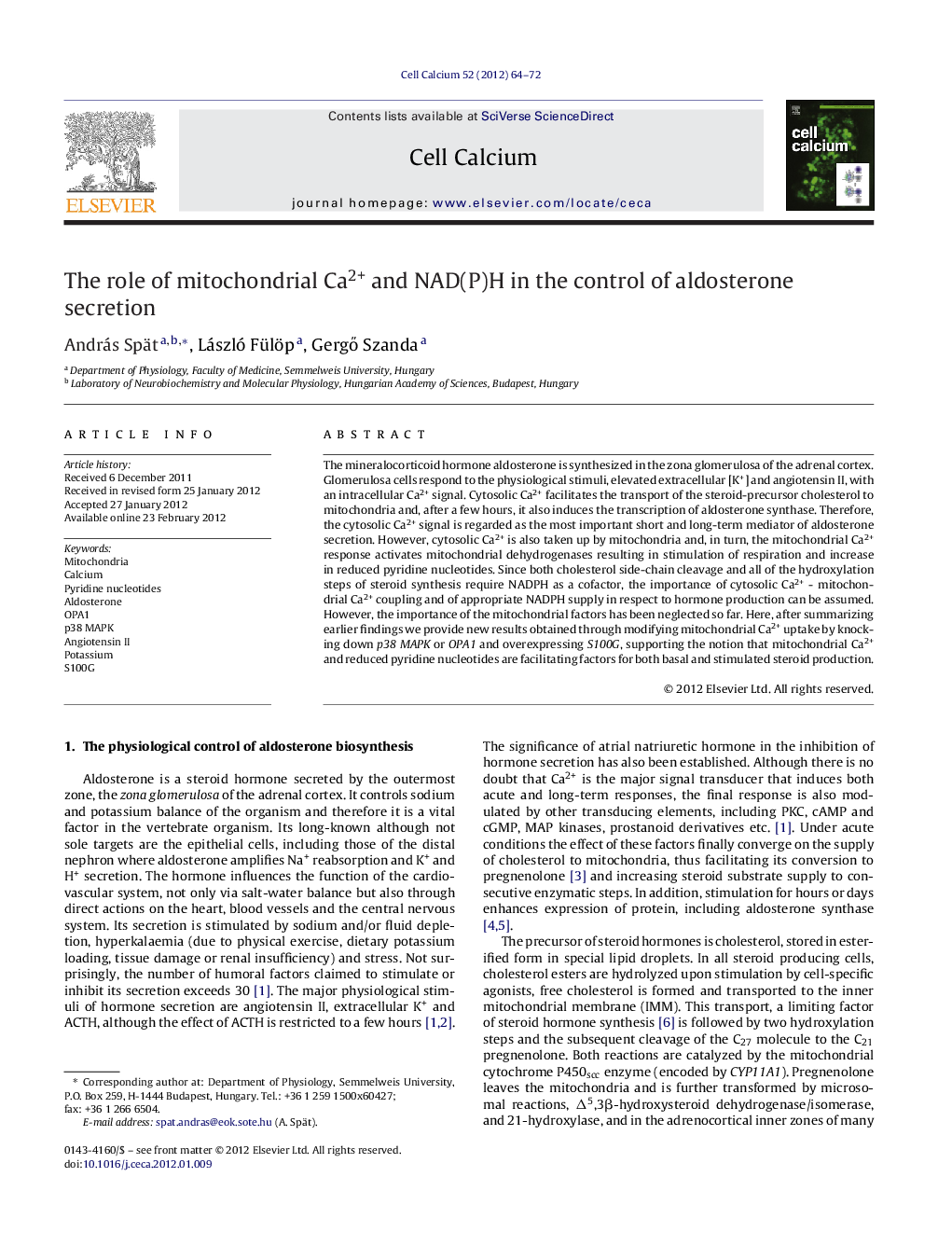| کد مقاله | کد نشریه | سال انتشار | مقاله انگلیسی | نسخه تمام متن |
|---|---|---|---|---|
| 10926282 | 1091801 | 2012 | 9 صفحه PDF | دانلود رایگان |
عنوان انگلیسی مقاله ISI
The role of mitochondrial Ca2+ and NAD(P)H in the control of aldosterone secretion
دانلود مقاله + سفارش ترجمه
دانلود مقاله ISI انگلیسی
رایگان برای ایرانیان
کلمات کلیدی
موضوعات مرتبط
علوم زیستی و بیوفناوری
بیوشیمی، ژنتیک و زیست شناسی مولکولی
بیولوژی سلول
پیش نمایش صفحه اول مقاله

چکیده انگلیسی
The mineralocorticoid hormone aldosterone is synthesized in the zona glomerulosa of the adrenal cortex. Glomerulosa cells respond to the physiological stimuli, elevated extracellular [K+] and angiotensin II, with an intracellular Ca2+ signal. Cytosolic Ca2+ facilitates the transport of the steroid-precursor cholesterol to mitochondria and, after a few hours, it also induces the transcription of aldosterone synthase. Therefore, the cytosolic Ca2+ signal is regarded as the most important short and long-term mediator of aldosterone secretion. However, cytosolic Ca2+ is also taken up by mitochondria and, in turn, the mitochondrial Ca2+ response activates mitochondrial dehydrogenases resulting in stimulation of respiration and increase in reduced pyridine nucleotides. Since both cholesterol side-chain cleavage and all of the hydroxylation steps of steroid synthesis require NADPH as a cofactor, the importance of cytosolic Ca2+ - mitochondrial Ca2+ coupling and of appropriate NADPH supply in respect to hormone production can be assumed. However, the importance of the mitochondrial factors has been neglected so far. Here, after summarizing earlier findings we provide new results obtained through modifying mitochondrial Ca2+ uptake by knocking down p38 MAPK or OPA1 and overexpressing S100G, supporting the notion that mitochondrial Ca2+ and reduced pyridine nucleotides are facilitating factors for both basal and stimulated steroid production.
ناشر
Database: Elsevier - ScienceDirect (ساینس دایرکت)
Journal: Cell Calcium - Volume 52, Issue 1, July 2012, Pages 64-72
Journal: Cell Calcium - Volume 52, Issue 1, July 2012, Pages 64-72
نویسندگان
András Spät, László Fülöp, GergÅ Szanda,